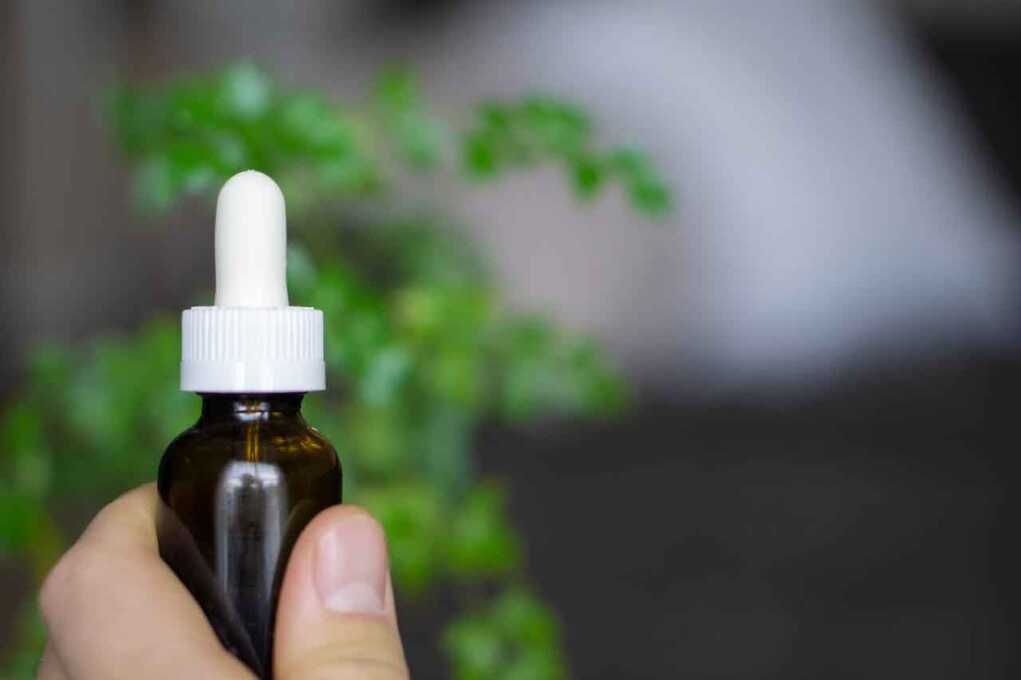
Oregano is a heavy-hitter herb for the cold and flu season and year-round.
Tis is the season of viruses. Whether we’re fighting the common cold (coronavirus family), the flu (influenza virus family), stuffy noses, coughs, fevers, strep throat, ear and sinus infections, or types of pneumonia (Streptococcus bacteria family), conventional treatments are antibiotics—which may or may not have the desired effect on the healing process. Quite the contrary, these pharmaceuticals often come with unwanted side effects, and there’s the ever-growing problem of drug resistance.
Oregano is one of the few heavy hitters against such seasonal microbial attacks—with multi-faceted ways of implementation including teas and extractions, as an essential oil, or in culinary preparations.
This article is a guide to using oregano as an anti-microbial during this winter season or how to grow it yourself in the spring.
Oregano: The Powerhouse
Oregano is an unimposing small semi-woody shrub—an aromatic perennial with tiny purple flowers. Though native to the Mediterranean, it can be cultivated everywhere. Perhaps, at some point, you’ve grown oregano yourself on your window sill or in your garden.
Oregano’s medicinal qualities are outstanding. Although its anti-fungal value might come to mind first, the herb also features other superior anti-microbial properties for the upcoming cold and flu season.
Another article published in Critical Reviews in Microbiology, notes this favorable synergy between essential oils and antibiotics and describes the basis for its effects:
“Antibiotics and the essential oil components may act synergistically, such as by affecting multiple targets; by physicochemical interactions and inhibiting antibacterial-resistance mechanisms. Many reported assays show additivity or moderate synergism, indicating that EOs may offer possibilities for reducing antibiotic use.”
Carvacrol is the main compound in oregano oil. It can be considered a natural alternative to prescription drugs, like antibiotics, as it exhibits rapid bactericidal activity, especially against a bacterial pathogen called Streptococcus pyogenes. This human-specific bacterium causes a wide array of infections, from mild symptoms to life-threatening conditions.
Nature’s Powerful Healing Potential
Plant-derived compounds and constituents of essential oils are powerful healing alternatives.
Herbal Uses
Traditional Chinese medicine (TCM) describes oregano as an herb that dispels dampness (fluid build-up), regulates the qi (vital energy), and releases the exterior (promotes sweating). In our Western language, we can translate this into oregano working as a detoxifier through the lymphatic system. It induces perspiration and is therefore suited for fever management if the illness comes with mucus and chills. In this case, oregano would be prepared as an infusion.
Preparation of Oregano Tea*
- Use ½ to 1 tsp. of dried oregano leaves to 8 oz of boiling water
- Steep covered for 15 minutes
- Drink 4 oz up to 3x daily
Essential Oil and Aromatherapy
A 2017 study published in the journal Molecules specifies oregano’s healing qualities as an essential oil. Besides its well-known antimicrobial, antiviral, and antifungal properties, the paper describes the herbal essence as having “potent antioxidant, anti-inflammatory, antidiabetic and cancer suppressor agents.”
Overall, the lung and respiratory system benefits from the use of oregano as an expectorant, anti-spasmodic, and anti-inflammatory. When colds or the flu come accompanied by symptoms of excess mucus, thick phlegm, and upper respiratory congestion, oregano can improve these conditions.
Caution and Contraindications
Although the U.S. Food and Drug Administration (FDA) regards oregano and oregano essential oil as “generally recognized as safe” food ingredients, oregano is a powerful herbal medicinal and should be viewed as such.
The use of oregano is contraindicated during pregnancy when used above the normal dietary amounts.
Although essential oils can be used by internal or external means, a potential toxicity hazard can occur when essential oils are ingested orally and when untrained individuals ingest too much.
One of the reliable retailers of essential oils suggests using with caution on their website:
“Due to a high percentage of phenols it [oregano essential oil] is aggressive to mucus membranes and should be avoided unless blended in low percentage with essential oils from other chemical families.”
They continue, quoting Kurt Schnaubelt, author of the book “The Healing Intelligence of Essential Oils”:
“Oregano is suitable for internal use within safe parameters, it is rarely needed and should only be used with respect for how concentrated the oils are. [If taken internally, it would be best to administer the oil], by capsule diluted with a suitable carrier oil; generally, 1 drop is always enough when ingesting essential oils. Use of Oregano should be limited to treating acute conditions.” *
As oregano essential oil is very potent, even aromatherapy treatment should be approached with caution.
Culinary Uses
A safe and tasty way to get the benefit of oregano is to use the dried herb in the kitchen. Oregano is an aromatic herb, slightly bitter, and with a pungent flavor. Adding it to any recipe will have a tasteful impact. Try it in fish, poultry, and other meat dishes, as well as soups and stews, marinades, or dressings. Add it to black beans and rice, scrambled eggs, roasted potatoes, or as a topping on your pizza. Oregano has many versatile uses in the kitchen and other creative ways to use it:
- Herb butters.
- Herb-infused oils.
- Herb salt.
- Herb-infused vinegar (Oxymel).
Specific Varieties
When it comes to herbs, knowing the botanical (Latin) name of the plant is very helpful. Often, many similar varieties carry the same common name, yet, differentiate by their medicinal properties or uses.
In this case, oregano belongs to the Lamiaceae herb family, together with other aromatic herbs like thyme, lavender, mint, and hyssop. The report, published in Molecules, clarifies the multiple varieties of the plant family: “The oregano crop is divided into four distinct groups: Turkish oregano (Origanum onites), Spanish oregano (Coridohymus capitatu), Greek oregano (Origanum vulgare) and Mexican oregano (Lippia graveolens).” (Not to be confused with Origanum marjoram, commonly named Sweet Marjoram.)
Another study confirms both, historical traditional uses and herbal efficacy, “The leaves and dried herb of oregano as well as its essential oil are traditionally used for respiratory disorders, […].” The main components of oregano extracts have been associated with the capability of bacterial control, including against antibiotic-resistant strains.
Growing Oregano
Knowing the extraordinary qualities of oregano, you might think about growing it yourself when springtime rolls around. Oregano is an easy-to-grow herb and will be happy in your garden, raised bed, or container.
In addition, the University of Kentucky Cooperative Extension Service offers the following helpful pdf-downloads for gardeners, as well as general recommendations for utilizing oregano and cooking with herbs:
* This statement has not been evaluated by the FDA. This product is not intended to diagnose, treat, cure, or prevent disease.
Important Notice: This article was originally published at www.theepochtimes.com by Alexandra Roach where all credits are due.
Disclaimer
The watching, interacting, and participation of any kind with anything on this page does not constitute or initiate a doctor-patient relationship with Dr. Farrah™. None of the statements here have been evaluated by the Food and Drug Administration (FDA). The products of Dr. Farrah™ are not intended to diagnose, treat, cure, or prevent any disease. The information being provided should only be considered for education and entertainment purposes only. If you feel that anything you see or hear may be of value to you on this page or on any other medium of any kind associated with, showing, or quoting anything relating to Dr. Farrah™ in any way at any time, you are encouraged to and agree to consult with a licensed healthcare professional in your area to discuss it. If you feel that you’re having a healthcare emergency, seek medical attention immediately. The views expressed here are simply either the views and opinions of Dr. Farrah™ or others appearing and are protected under the first amendment.
Dr. Farrah™ is a highly experienced Licensed Medical Doctor certified in evidence-based clinical nutrition, not some enthusiast, formulator, or medium promoting the wild and unrestrained use of nutrition products for health issues without clinical experience and scientific evidence of therapeutic benefit. Dr. Farrah™ has personally and keenly studied everything she recommends, and more importantly, she’s closely observed the reactions and results in a clinical setting countless times over the course of her career involving the treatment of over 150,000 patients.
Dr. Farrah™ promotes evidence-based natural approaches to health, which means integrating her individual scientific and clinical expertise with the best available external clinical evidence from systematic research. By individual clinical expertise, I refer to the proficiency and judgment that individual clinicians acquire through clinical experience and clinical practice.
Dr. Farrah™ does not make any representation or warranties with respect to the accuracy, applicability, fitness, or completeness of any multimedia content provided. Dr. Farrah™ does not warrant the performance, effectiveness, or applicability of any sites listed, linked, or referenced to, in, or by any multimedia content.
To be clear, the multimedia content is not intended to be a substitute for professional medical advice, diagnosis, or treatment. Always seek the advice of your physician or other qualified health providers with any questions you may have regarding a medical condition. Never disregard professional medical advice or delay in seeking it because of something you have read or seen in any website, video, image, or media of any kind. Dr. Farrah™ hereby disclaims any and all liability to any party for any direct, indirect, implied, punitive, special, incidental, or other consequential damages arising directly or indirectly from any use of the content, which is provided as is, and without warranties.








